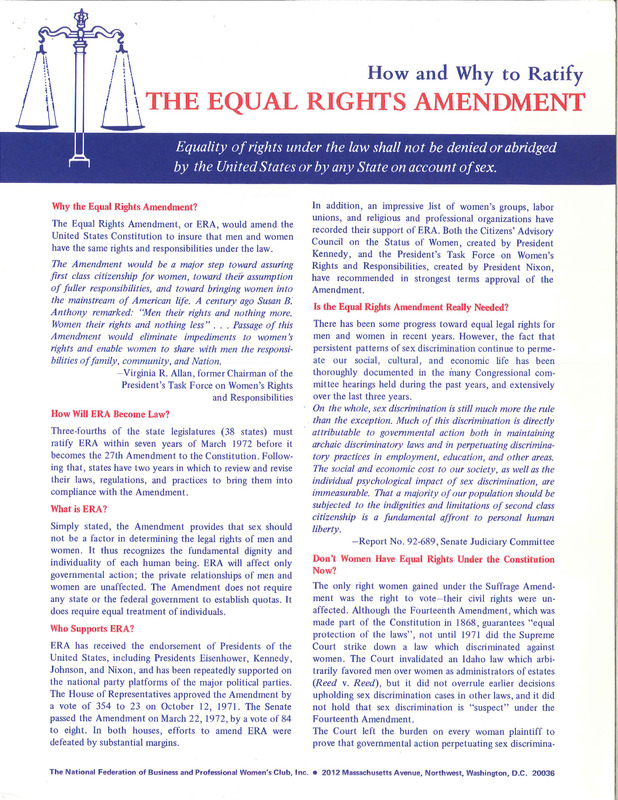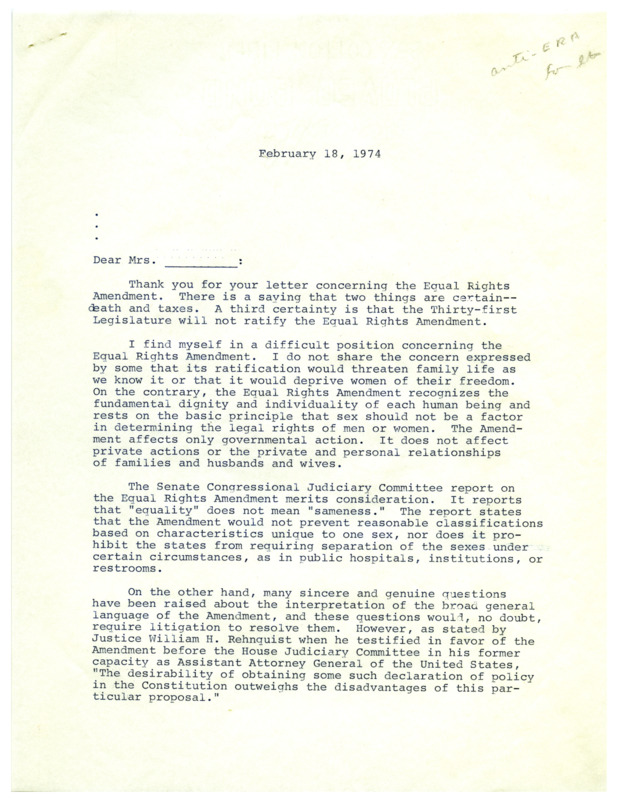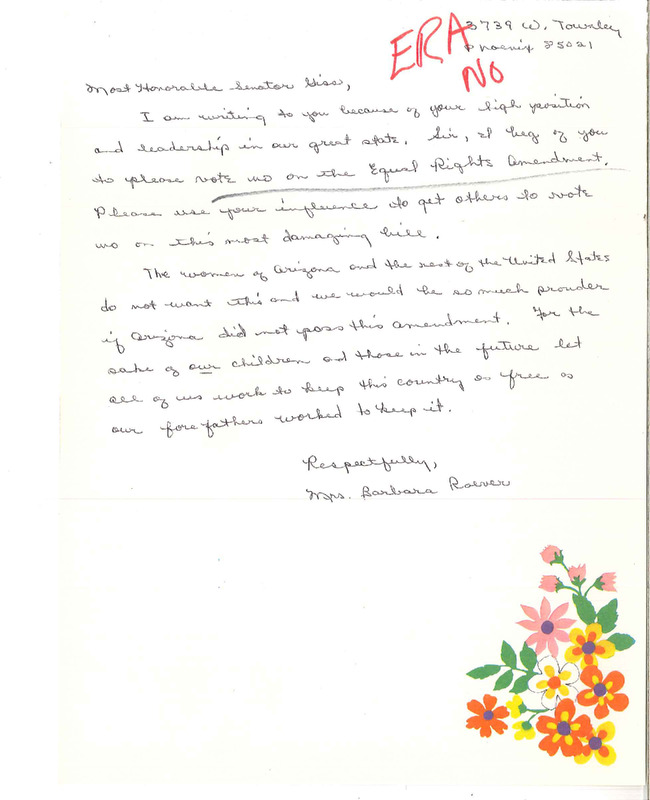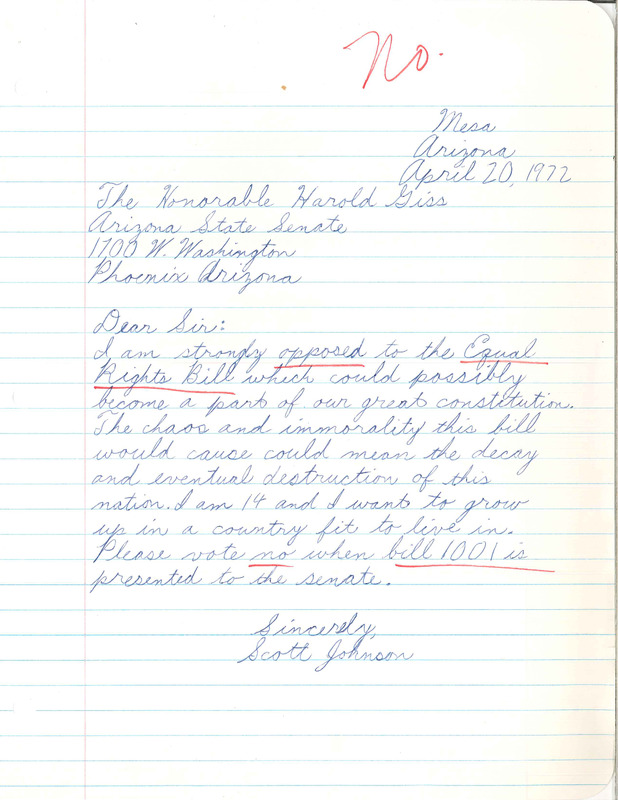The Equal Rights Amendment
The Equal Rights Amendment, is a proposed amendment to the constitution, originally written by the National Women's Party in 1923, however passed into the state ratification process in 1972. The goal of the amendment was and still is to ensure social equality for all genders, however there were mixed feelings about the ERA and what consequences it may have for women. Below, are items that discuss the technicalities of the ERA, as well a supportive personal note from Retha Warnicke who believed in the long term goals of the ERA.
The ERA required 38 states to ratify the amendment, and within a year 30 states already ratified the amendment, however it began to lose momentum as conservative and religious activist groups rallied in opposition. There was a fear shared by many in Arizona as well as across the country, that the ERA would mean same sex marriage, gender neutral bathrooms, and support the idea of women in war. It was not just housewives who felt happy with their role in society who were worried, but even school children (both boys and girls) who felt as though the ERA would ruin society for women as they explain in there letters below.
The Equal Rights Amendment saw a stalemate in 1977, with only 35 states ratifying it out of the necessary 38, until Nevada reopened the push for the ERA in 2017, becoming the 36th state. Shortly after, Illinois followed suit in 2018 and most recently, Virginia in 2020. Arizona has yet to ratify the Equal Rights Amendment, despite efforts from members of the state government. Alfredo Gutierrez, a previous Arizona senator, briefly describes his relationship with the ERA and how often he saw it dismissed by just one vote...





